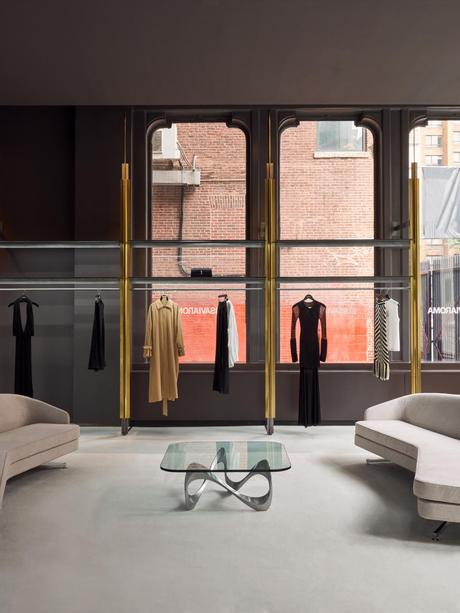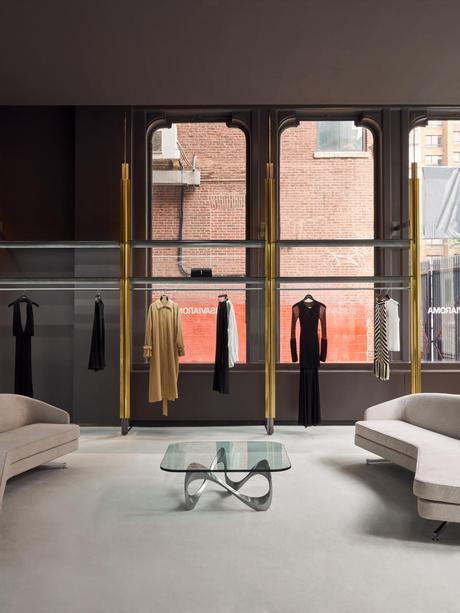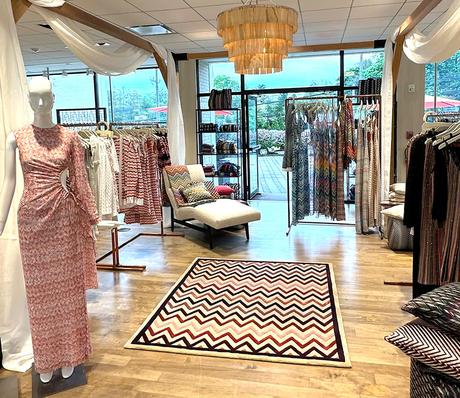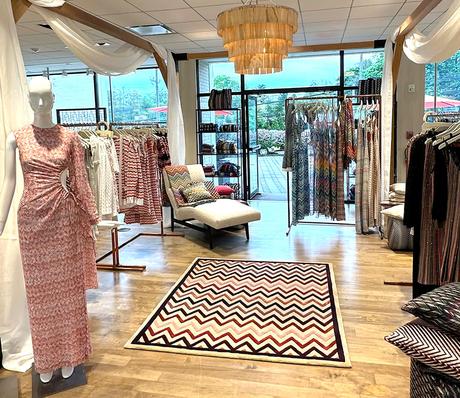MILAN - Italy's special role in the fashion industry is not limited to the big brands or the high-quality production chain.
The country has traditionally had one of the strongest representations of independent luxury and fashion retailers who have been instrumental in launching and supporting popular labels and newcomers over the years.
More from WWDScattered across the country's second-tier cities are retailers who have understood the fashion tastes and sensibilities of local consumers, forged strong ties with luxury brands and acted as curators with selected product and brand mixes.
With consumer confidence feeling the pressure of economic instability and geopolitical unrest, the reality check is difficult for local retailers to swallow.
The performance of the e-commerce business is sluggish. Luxury brands' direct retail strategies have reduced independent stores' access to big names. The discount policy of online retailers has been at the expense of small - and often physical - entrepreneurs.
How can the multi-brand retail formula move forward?
The topic was discussed on Monday at the "Re-Retail: Technology, Market and Consumers in the Fashion Retail World" summit, the first organized by Camera Buyer Italia, the country's association that brings together about 100 fashion and luxury retailers in the country with brings together 500 doors. general.
The consensus pointed to a return to basics, with retailers rediscovering their unique selling proposition, which was about offering a unique offering tailored to their customer base, and building a universe around the transaction that can attract big spenders. in the store.
"Our recipe in times of uncertainty has always been 'back to basics', focusing on what we do best, namely listening to our customers and defining our offering based on their current needs, while also trying to meet their future needs predict," said Luis Sans, CEO of Barcelona-based luxury boutique Santa Eulalia.
Santa Eulalia is one of the first global retailers to join Camera Fashion Retailer. Promoted by Maura Basili, president of Camera Buyer Italia, the international organization that focuses on grouping international players has already attracted Mitchells from the US, Germany's Emerson Renaldi and Benesch and Antwerp's Verso, in addition to the Spanish store and its partners from Camera Buyer Italia. .
Sans introduced the elephant in the room - the gray market - that has fueled revenue for independent retailers over the past decade.
That was before global brands - especially the most in-demand ones with annual revenues exceeding €1 billion - started scaling back as they increasingly embraced a direct-to-consumer strategy.
"Many of us have been dominated in recent years by ease of e-commerce sales and a certain ease of sourcing brands," Sans said.
Roberta Banaglia, CEO of investment firm Style Capital, which acquired a 40 percent stake in online and brick-and-mortar retailer LuisaViaRoma in 2021, echoed that sentiment.
While she recognizes the importance of direct retail for large-scale brands, she believes these strategies leave some customers unserved.
"I believe that in the long run, the total absence of big brands at multi-band retailers will have an impact on their accessibility for a certain customer who is curious and trendy" but might avoid monobrand stores altogether, she explained .
"Multibrand stores have to survive. They are such a wealth for end users and a hotbed for emerging talent," said Benaglia, adding that this strategy could help offset the negative impact of big brands increasingly reducing the margins left to wholesale players.


According to a survey conducted by HeyLight, the payment service of Compass Bank, which interviewed around 90 luxury and fashion retailers that are part of Camera Buyer Italia, innovation starts with the purchase.
About 64 percent of respondents said they have a stronger focus on emerging brands that provide a more compelling and emotional range, while 36 percent of retailers say they have continued to leverage established brands to ensure high sell-through .
Independent retailers agreed that despite the current headwinds, brick-and-mortar retail should be preserved for customers who are committed to shopping in-store.
"I think any luxury customer today, if you ask them, 'do they want to shop in a number of monobrand stores, or would they rather go to one store and have everything put together for them?' I would say 100 percent of customers prefer to shop in a multi-brand environment," said Bob Mitchell, co-CEO of Connecticut-based luxury retail conglomerate Mitchells, which includes eight stores under the Mitchells, Richards, Marios and Wilkes Bashford banners with units in San Francisco, Seattle, Portland, Oregon, Palo Alto, California and Greenwich, Connecticut, among others.
"We really want to be a multi-brand retailer that is active in wholesale. I am convinced that we will not make any concessions. I believe concessions are happening in the real estate sector rather than retail," he said.


According to Claudio Antonioli, the brain behind the eponymous store and e-commerce platform, and also founder of Dreamers Factory, currently an incubator for emerging brands, the biggest challenge for retailers today is the analysis and optimization of market requests, as well as building of a universe that is not only transactional: the modern concept store.
"It used to be a service, but today we talk about hospitality," Mitchell reiterated. "We strive to create an environment in stores where customers want to be, whether through food, drinks and great professionals [sales associates]" he said.
"We think this is our moment to shine...I think the customer still wants that multi-brand experience in a great store with great sales associates. And it all starts with remembering that the stores are the center of our universe," he added.
"Our interlocutors and our customers are more demanding than ever. They are looking for style and culture," says Beppe Angiolini, CEO of Sugar, the multi-brand store from Arezzo.
Long-term profitability is critical to ensure survival, as are investments to drive continued innovation in retail.
"It really is a huge change, a real challenge, as almost all reference points have changed," says philosopher and sociologist Gilles Lipovetsky. "Multibrand retail has no choice but to renew and innovate itself. It is not a marketing whim, it is an essential necessity."
The best of WWDSign up for the WWD newsletter. For the latest news, follow us on Facebook, Twitter and Instagram.
